Teres major muscle
Table of Contents
Teres major Muscle Anatomy
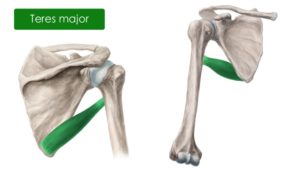
The teres major muscle is one of the six muscles within the scapulohumeral muscle group. This muscle is commonly confused as a rotator cuff muscle, but it is not because it does not attach to the capsule of the shoulder joint, unlike the teres minor muscle.
Origin :
It originates from the lower lateral border and inferior angle of the scapula.
Insertion :
It inserts on the medial lip of the intertubercular groove(bicipital) of the anterior humerus.
Nerve supply :
The lower subscapular nerve(C5,C6,C7) supplies the muscle.
Blood supply :
The teres major muscle is vascularized by the thoracodorsal branch of the subscapular artery and the posterior circumflex humeral artery.
Action :
It acts as medial rotator and adductor of the shoulder joint.
Strengthening Exercises :
1. Internal Rotation :
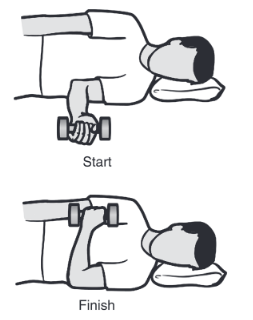
- Lie on a firm, flat surface on the side of your affected arm.
- Place a pillow or folded cloth under your head to keep your spine straight.
- Hold your injured arm against your side as shown, with your elbow bent at a 90° angle.
- Keep your elbow bent and against your body and slowly rotate your arm at the shoulder, raising the weight to a vertical position.
- Slowly lower the weight to the starting position.
Stretching Exercise :
1. Standing Stretch :

- Stand with feet shoulder width apart, chest up and head back over your shoulders.
- Raise the right arm over head and grab your right elbow with the left hand.
- Pull your right elbow over to the left gently and bend your trunk to the left until a comfortable stretch is felt.
- Hold this posotion for 30 – 60 seconds.
- Repeat this on the other side.
Related pathology :
The teres major is relatively prone to the development of trigger points. These are local, permanent hypertensive areas with rigidification (myofascial pain syndrome).
Common causes are poor stretching before physical activities, trauma (e.g. fall on the shoulder) and microtraumas through chronic inappropriate straining. Symptoms include local pain, which may radiate to the lateral shoulder during palpation and difficulties in abducting and elevating the arm.


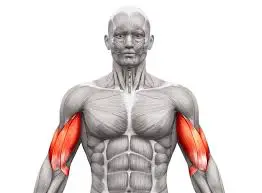
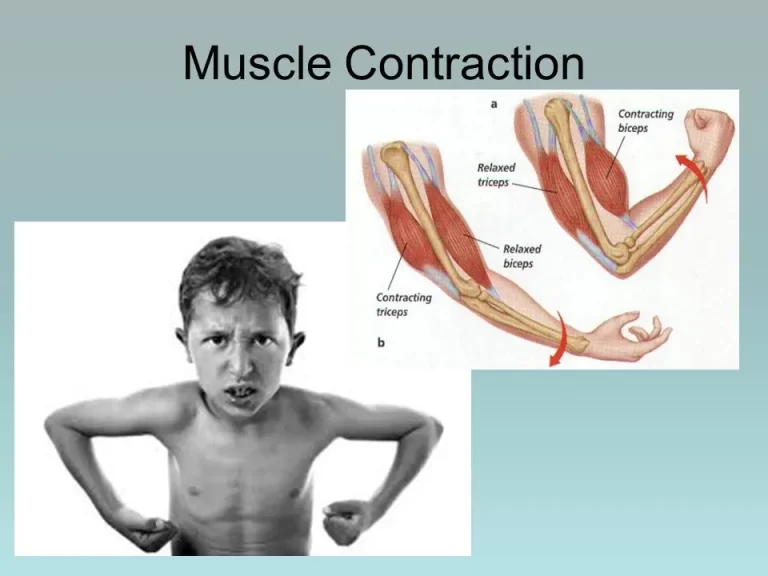
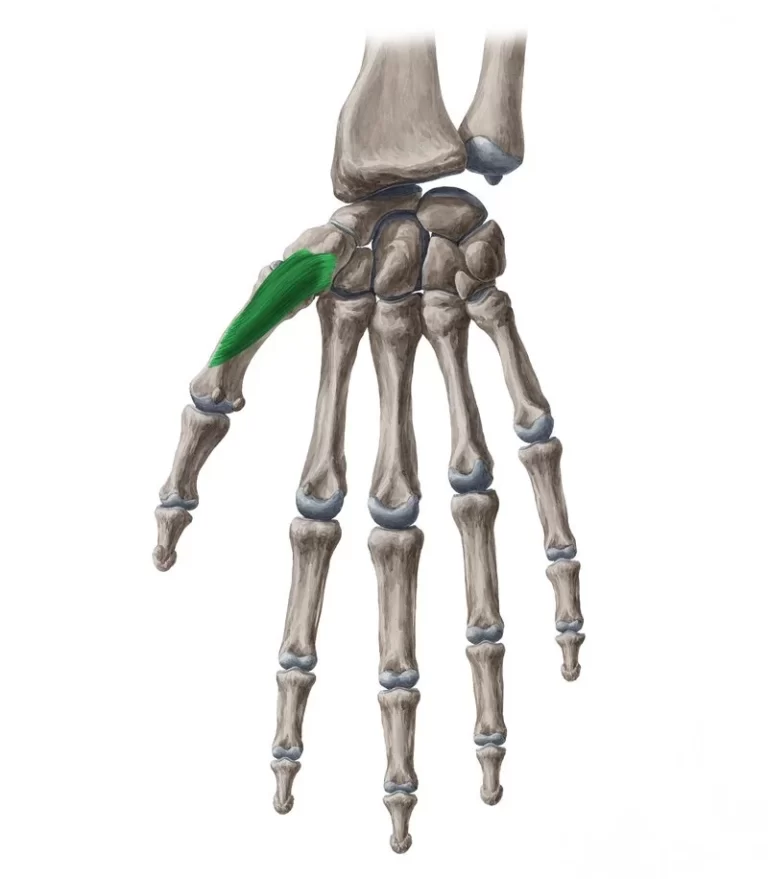
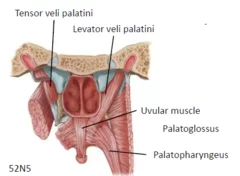
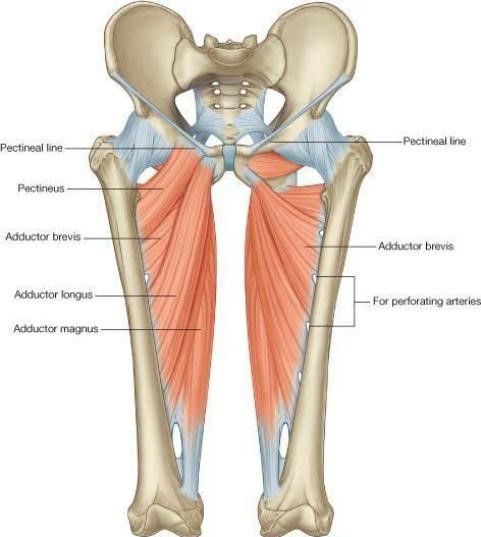
3 Comments